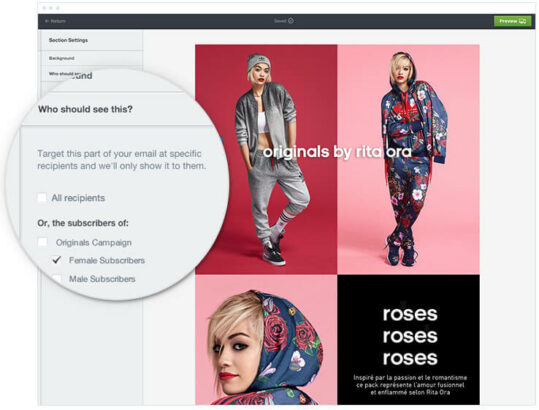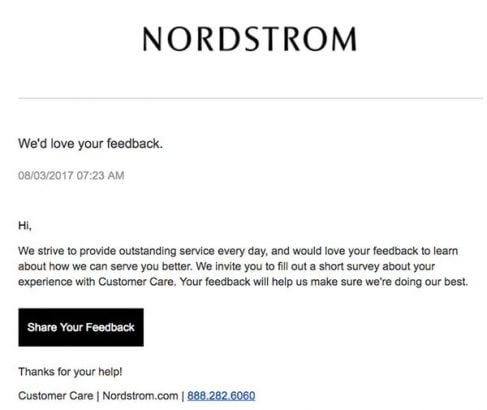The right e-commerce platform and correct business practices can turn your brand into a sales juggernaut. We see more and more customers taking the quick dip into the pool of online shopping and services rather than spending time at the malls/retail stores. Smart software and orchestrating sending out relative content will not only help to build a great sales funnel but also lead to ultimate sales conversion.
At the same time, online wallets and payment providers are becoming an all-time favorite and a common alternative to traditional credit & debit cards.
Marketers, CEOs, CIO’s, CTO’s need to work differently and evolve the e-commerce business rapidly, and in order to do that we have the top 10 marketing automation techniques for e-commerce.
10 Marketing Automation Techniques for E-commerce
1. Track VIP Customers
Always and always, just hunt ‘em down. Keep a track of all your VIP customers, those who inordinately contribute to a large amount of your overall revenue so you must keep this segment of customers happy and regularly indulged with great offers personalized to only your loyal customers. Since they are a major factor for every business persuasion, evaluate the category that they’re buying the most from; This will also help you recognize your best-selling products and services.
Of course, all your customers need equal attention and unbiased customer experience but make sure you elevate the WOW factor for a customer who spends $200 a year than the $50/year spender.
2. CRM (Customer Relationship Management)
To manage customer interaction, a business needs powerful strategies and techniques which are primarily sales-focused. CRM is one such social savvy tool where one can track all the customer interactions over different social media platforms as well now, which is an additional advantage for marketers working on e-commerce marketing automation since it is a good source of information.
CRM software can maintain cloud-based data that further helps retain customers and also help predict the behavior and past purchases of a customer. This marketing automation technology helps in retargeting customers. The objective here is to provide a seamless experience to the customer and collect as much data as possible to keep your customers from patronizing your competitors.
3. Segmenting Your Customers

Do you keep track of all the customers that visit your website/online store? Identifying and leveraging your customers is another important thing to do while you work on the marketing automation for your e-commerce brand. Remember your business model depends on your target audience. Now, there are several ways to do this based on Demographic factors, Purchase History, Psychographic factors, and Dividing them into Benefit Groups. All of this helps you in personalizing the experience for customers by providing them with more relevant services on one hand and devising clear strategies for the growth of your online business on the other. Using this marketing automation technique, you can establish a positive relationship with your customers and boost sales. This helps you come up with ideas to promote your best-selling products. This marketing automation technique could be tagged as the backbone of your entire business since it results in nearly 80% of your ROI.
4. Social Media & ChatBots
Social media is the greatest avenue for any e-commerce to expand brand awareness, improve the relationship with your audience and understand their needs better, provide quick resolutions, etc. Although the world of social media is so vast with numerous ways to reach out to the targeted audience one needs to be precise with the content to avoid floundering. Social media automation is a crucial practice because it’s impossible to monitor your brand mentions and post high-quality content consistently. Also, it makes your work tedious and is scheduled timely.
When your brand presence is felt on various platforms/social media channels, it’s only fair that customers ask you a lot about your product/services and to avoid losing out a direct customer interaction, conversational bots are extremely important. ChatBots can reduce your customer service costs by 35%. With Facebook messenger having the largest user base among the other chat apps, it’s a no-brainer to launch a chatbot on it first. This marketing automation technique aims at organizing your entire marketing in one place and maximizing the visitor potential value by giving customers a revolutionary experience.
5. Influencer Marketing

The call for close interaction with the brand calls for much more than the above-stated marketing automation techniques and Influencer driven marketing strategy is one of them. This marketing automation technique in e-commerce includes using influencers to take your message to the larger market. Since a lot of the public can relate to another human who promotes your product, it becomes easy for you to market yourself instead of doing it directly or through any other social media platform.
We all know how trust matters these days and nothing can be as tremendous as physical proof of your product when someone with a million followers promotes it. While you get an influencer to talk about your product make sure you consider certain pointers:
- Analyzing their engagement rates
- Is the influencer a paid one or works on a barter
- Whether you need a Micro influencer or a Macro influencer
- Whether they have an organic reach or not
- What’s the style of stocking and frequency of posts on their profile
- TRUST, Trust the creativity of an influencer if they match your style, tone, and brand’s value but convey your strategy very CLEARLY
- In the end, don’t forget to track the results of the marketing campaigns
6. Content

The process of creating content is an extensive one. To create content for your brand’s blog posts, one should think of impactful ways to do it. Your automated content strategy should comprehend these 4 important points to begin with: RESEARCH, CREATION, EDITING & DISTRIBUTION.
Your content development skills should be such that even if you are editing or manipulating a given content, you don’t miss out on the knowledgeable fillings to the users. Content curation is the most crucial inbound marketing automation technique for your e-commerce brand.
When it comes to automating your content, there are several tools to do it for you. You can study them and use them. After you start using these tools you’ll know which ones are working right for you and which aren’t. But first, you need to analyze which area are you trying to fire up and accordingly see which automation tools will reach them best. Two very important things that a content developer should keep in mind before sending out the copies
- Proofread: Always make sure your grammar is in place. We know what badly written content can do to the brand positioning in the market. Spelling errors/ irrelevant lengthy content, unaligned fonts can be an online HORROR.
- Keywords: Deciding on certain keywords that you’d be using in your articles/blogs/social media posts is extremely important since it helps in attracting relevant search traffic. Keywords act as a central cohesive source of support between all your content and your target audience.
Monitor your content regularly to see if it’s bringing in any ROI or do you need to streamline your ideation.
7. Email Marketing

This one’s my favorite e-commerce automation technique, where you send personalized emails to relevant/segmented customers individually after they take a specific action on visiting your website. Email advertising is a plan of action that gives your business a direct channel to build a relationship with your customers for promotion. Mailchimp is one such widely used email automation tool.
Email marketing campaign strategy includes the Welcome Email, Promotional Series, Seasonal Campaigns, Triggered Emails, Newsletters, Connect via Social Media, Emails with Exclusive Offers, etc.
Through Email marketing, your events are all timely scheduled so that the customers don’t miss out on any piece of information.
8. Conduct Tests
Marketing automation techniques can help your e-commerce business test different variables like email marketing, cross-platform user experience, etc. The implementation of tests can help collect a significant amount of useful data from customers.
The A/B testing is a way of comparing two or more variants of a page shown to the customers to recognize a certain metric that performs better than the other. It also improves nearly every aspect of marketing automation. The tests can be conducted by e-marketers.
9. Creating Leads
Generating leads for business is the smartest way to promote it. To perform this, you can either directly engage with the prospective leads or deploy outbound/inbound marketing automation techniques. Lead automation comprises a lot of touchpoints for the leads to enter the sales funnel.
These can be done through social media platforms, websites, email marketing, old customer database, PPC campaigns, and much more.
Better lead management is a result of regular tracking, targeting marketing messages with great precision, and sales follow-up. It doesn’t end here, you have to constantly nurture the leads to convert them eventually to produce more revenue for your organization.
10. Integrations
Marketing automation techniques are being used more and more with the e-commerce business becoming widely spread and extracting customer databases becoming more complex. Marketing automation integration aids you in connecting operating and syncing with other programs that help to promote a friendly software ecosystem.
Connecting two different marketing automation tools can help share important information, create organizational support and make the work between each more effective.
There are two kinds of integrations, Direct and Third-Party Integration Hubs.
- Direct integrations, Simply put, robust API integrations are direct connections that can transfer data between two software applications. Some API integrations can be used or turned on by anyone with an administrative login. Others will require help from your development team or an outside specialist.
- Third-Party Integrations, data flows from one cloud application to a central hub, then from the central hub to a second cloud application.
One disadvantage of a third-party integration hub is that it doesn’t sync data in real-time.
As a marketer, one has to make sure that all the marketing automation tools have an essential function and co-exist with the other programs when integrated.
Conclusion
When used correctly, marketing automation techniques can generate more leads, maximize ROI and maintain higher customer satisfaction rates. We recommend you use this guide for exponential growth & increased revenue since it provides a precise and prompt execution of processes with minimal costs. Also, this allows for minimized error due to accurate data points triggering further processes.













